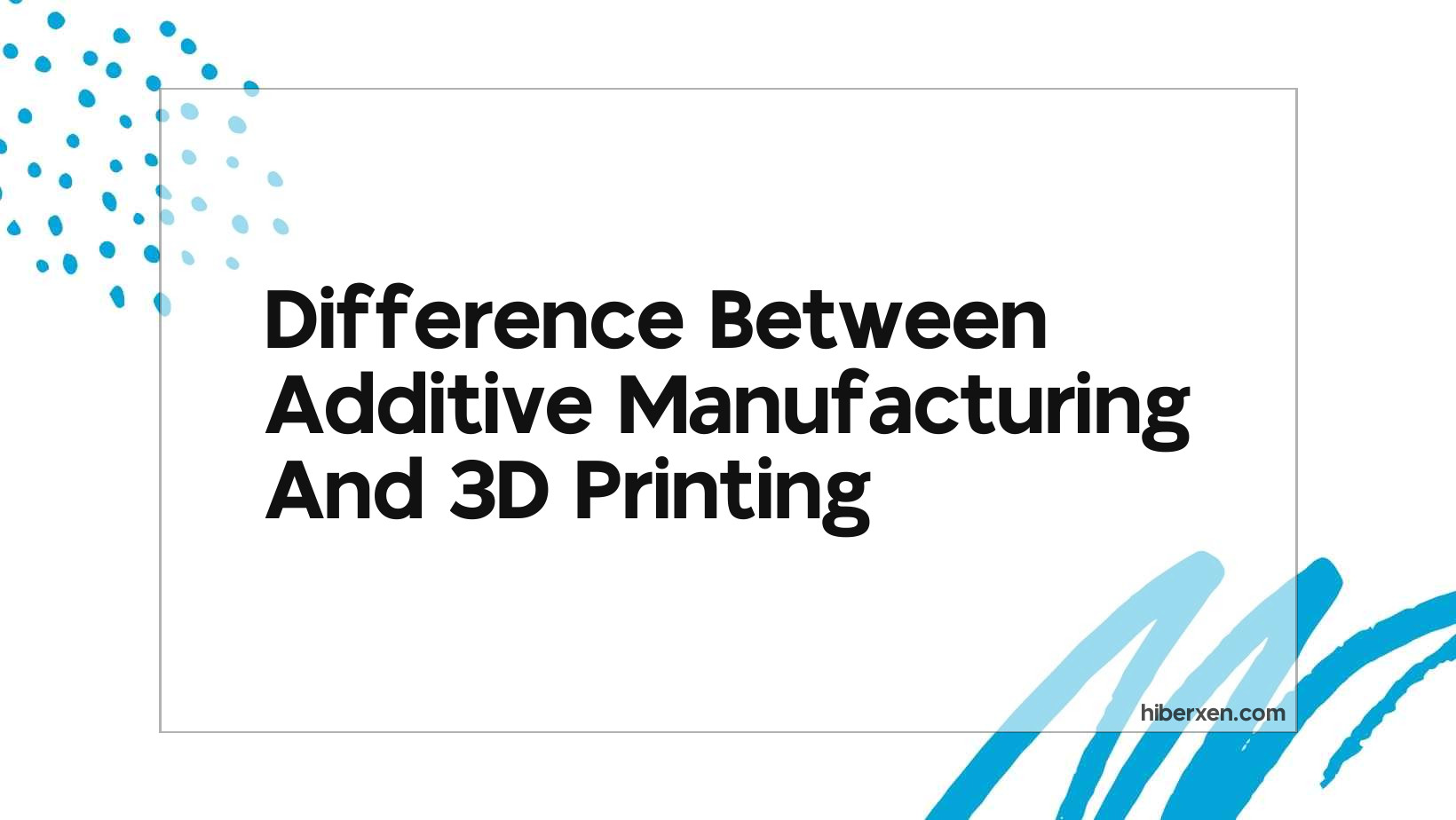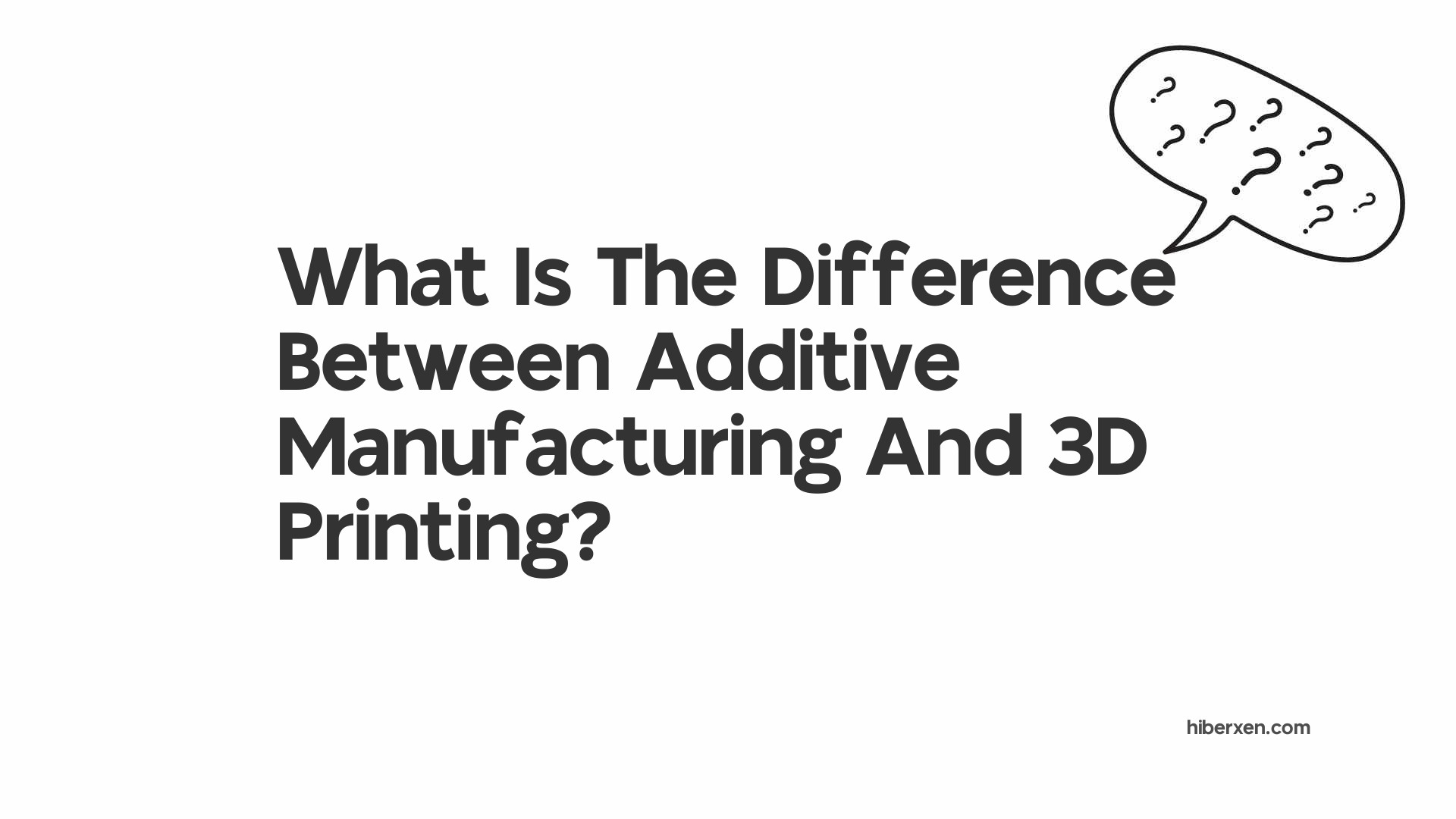Additive manufacturing is the process of successively adding material to build an object from scratch. 3D printing is a subset of additive manufacturing that refers to the specific process of joining materials layer by layer to create an object.
In additive manufacturing, objects are created by successively adding material layer by layer. In 3D printing, objects are created by depositing material one layer at a time from a nozzle or print head.
Additive manufacturing is more accurate than 3D printing, and can create objects with more complex geometries. However, 3D printing is faster and less expensive.
What Is The Difference Between Additive Manufacturing And 3D Printing?
The difference between additive manufacturing and 3D printing is that additive manufacturing is a process of joining materials to make objects from 3D model data, while 3D printing is a type of additive manufacturing that creates objects by successively adding material layer by layer.
3D printing and additive manufacturing are two terms that are often used interchangeably. However, there is a difference between the two technologies.
3D printing is a process of creating a three-dimensional object from a digital file. The object is created by successively layering material until the entire object is complete.
Additive manufacturing, on the other hand, is a process of creating an object by adding material layer by layer. The material can be in the form of powder, liquid, or even sheets.
So, what is the difference between additive manufacturing and 3D printing? additive manufacturing is a more general term that includes all processes of creating an object by adding material layer by layer. 3D printing, on the other hand, is a specific process that refers to the creation of an object from a digital file.
What Are The Benefits Of Additive Manufacturing Over 3D Printing?
Additive manufacturing offers the ability to create parts with more complex geometries, finer details, and better material properties than 3D printing.
Additive manufacturing, also known as 3D printing, is a process of making a three-dimensional object from a digital file. The advantage of additive manufacturing over traditional manufacturing is that it can create complex shapes that would be difficult or impossible to make using other methods.
One example of where additive manufacturing has an advantage is in the production of medical implants. Traditional manufacturing methods are not able to create the intricate shapes needed for some implants, but additive manufacturing can. This means that patients who need these implants can get them more quickly and with less risk of complications.
Additive manufacturing also has the potential to reduce waste. With traditional manufacturing, large amounts of material are often wasted as it is cut away to create the desired shape. With additive manufacturing, the object is built up layer by layer, so there is very little waste.
There are many other potential benefits of additive manufacturing. For example, it could be used to create customized products, or to make parts for products that are difficult to access. As the technology continues to develop, the possibilities are endless.
What Are The Benefits Of 3D Printing Over Additive Manufacturing?
3D printing is faster, more precise, and less expensive than additive manufacturing.
3D printing and additive manufacturing are both rapidly growing industries with a lot of potential. But what are the benefits of 3D printing over additive manufacturing?
For one, 3D printing is generally faster and more affordable than additive manufacturing. Additive manufacturing often requires specialised equipment and can be quite slow, whereas 3D printing can be done on a desktop printer.
3D printing is also more versatile than additive manufacturing. With additive manufacturing, you are limited to the materials that can be used in the process. But with 3D printing, you can print with a wide variety of materials, including metals, plastics, and even food.
Finally, 3D printing is more accessible than additive manufacturing. There are a growing number of companies that offer 3D printing services, and the technology is becoming more and more affordable. Additive manufacturing is still largely the domain of large companies and research institutions.
So if you’re looking for a faster, more affordable, and more versatile manufacturing process, 3D printing is the way to go.
What Are The Key Differences Between Additive Manufacturing And 3D Printing Technologies?
Additive manufacturing refers to the process of joining materials to make objects from 3D model data, while 3D printing generally refers to the fabrication of objects by successively laying down thin layers of material.
The key difference between additive manufacturing and 3D printing technology is that additive manufacturing is a process of joining materials to create objects from 3D models, while 3D printing is a process of creating a 3D object from a digital file.
Additive manufacturing is also known as direct digital manufacturing (DDM) or layer manufacturing. It is a process of making three-dimensional solid objects from a digital file. The objects are created by successively adding material until the desired object is created. This process is different from traditional machining processes, which involve removing material from a workpiece to create the desired object.
3D printing, on the other hand, is a process of creating a three-dimensional object from a digital file. It is also known as additive manufacturing. The objects are created by successively adding material until the desired object is created. This process is different from traditional machining processes, which involve removing material from a workpiece to create the desired object.
Both additive manufacturing and 3D printing technology have their own advantages and disadvantages. Additive manufacturing is more expensive than 3D printing, but it has the ability to create more complex objects. 3D printing is less expensive, but it is limited to creating simpler objects.
What Are The Most Common Additive Manufacturing Processes?
The most common additive manufacturing processes are stereolithography (SLA), selective laser sintering (SLS), and fused deposition modeling (FDM).
Additive manufacturing (AM) is a process of making three-dimensional solid objects from a digital file. The creation of a 3D printed object is achieved using additive processes. In an additive process an object is created by successively adding material layer by layer, unlike subtractive manufacturing processes, in which parts are created by removing material. 3D printing is the common name for additive manufacturing.
The most common additive manufacturing processes are:
1. Material Jetting
2. Material Extrusion
3. Binder Jetting
4. Powder Bed Fusion
5. Sheet Lamination
1. Material Jetting
Material jetting is an additive manufacturing process that works by depositing droplets of material onto a build platform. The droplets are deposited from a print head that is moved across the build platform layer by layer. The print heads can have multiple nozzles, each dispensing a different material. The most common materials used in material jetting are photopolymers, which are cured using ultraviolet (UV) light.
2. Material Extrusion
Material extrusion is an additive manufacturing process that works by extruding a material through a nozzle onto a build platform. The material is extruded layer by layer to create the desired 3D object. The most common materials used in material extrusion are thermoplastics, which can be melted and solidified to create the 3D object.
3. Binder Jetting
Binder jetting is an additive manufacturing process that works by depositing a binder material onto a build platform. The binder material binds together the powder particles to create the desired 3D object. The most common materials used in binder jetting are metals, ceramics, and plastics.
4. Powder Bed Fusion
Powder bed fusion is an additive manufacturing process that works by melting a powder material layer by layer. The most common materials used in powder bed fusion are metals, plastics, and ceramics.
5. Sheet Lamination
Sheet lamination is an additive manufacturing process that works by bonding together layers of material. The most common materials used in sheet lamination are metals, plastics, and composites.
FAQ
What Are The Most Common 3D Printing Processes?
What Are The Benefits Of Using Additive Manufacturing For Production?
What Are The Benefits Of Using 3D Printing For Production?
What Are The Drawbacks Of Additive Manufacturing?
What Are The Drawbacks Of 3D Printing?
Hopefully, you are clear on the difference between additive manufacturing and 3D printing. If you still have any questions, feel free to comment below.
Author
-
I'm Shahrear, a Designer Lead who loves electronics. Since 2003, I’ve been traveling and living all over the world. I love breaking down complex concepts in electronics and presenting them to others in an approachable way. I think that the language used in most books about electronics is hard for people who don't already know about electronics to understand. I want that to change. So, I've started blog where I talk about everything on electronics for people who are just starting out.
View all posts






